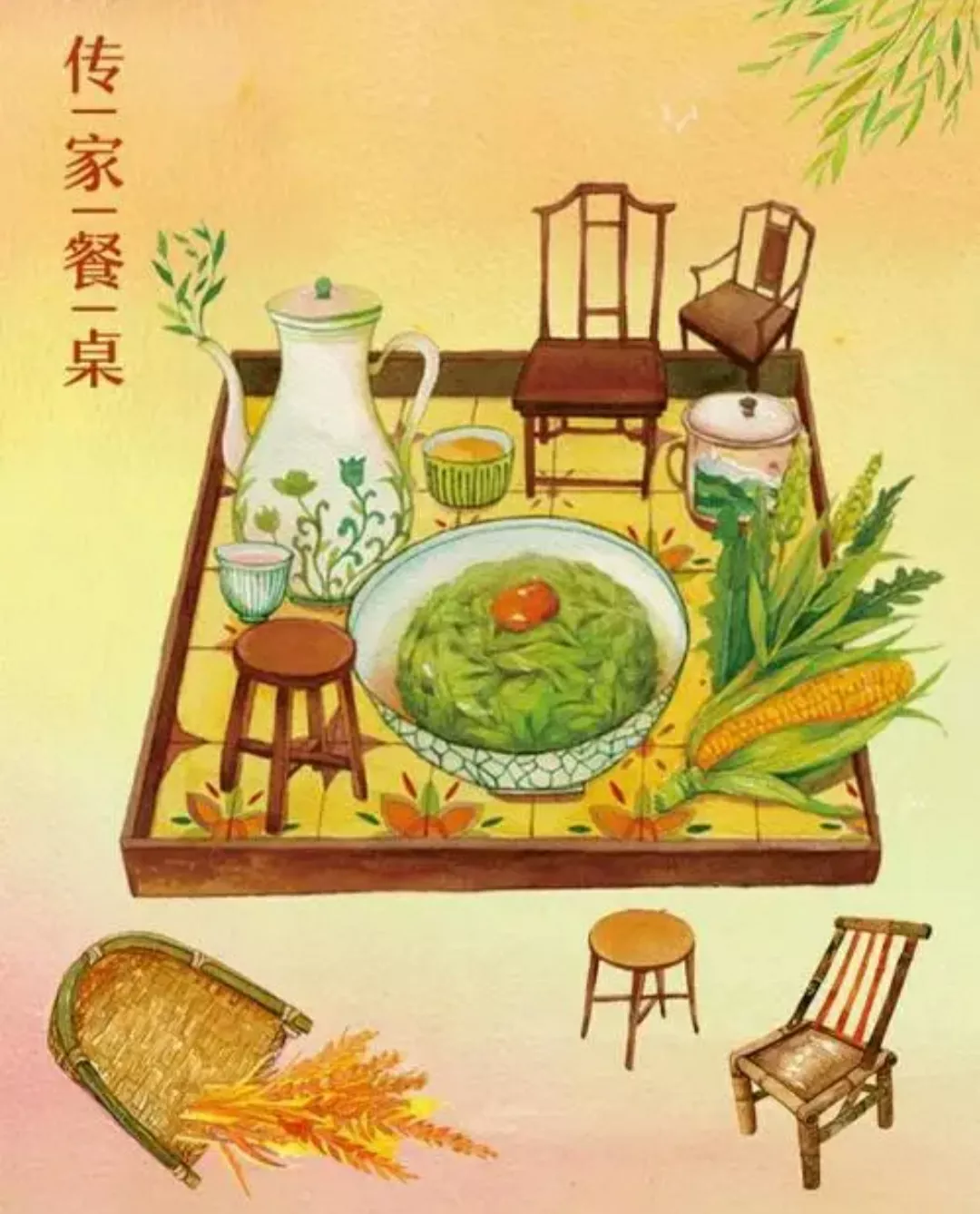Ancient Chinese Year
In the blink of an eye, this year is almost over, people are returning to their jobs one after another, and the struggle of the new year will soon begin again.
Yesterday I read a book and saw some customs of the ancients during the New Year, which is very interesting, and I will share it with you here.
1. 【Jin Dynasty Spring Plate】
Li Chun salty as a spring plate to taste, reed parsley buds with leek yellow.
Give each other friends the same taste, and do not need to wait for the anointing of the stomach.
The Spring Plate of the New Year of the Jin Dynasty is also called the Wuxin Plate, which is made of garlic, small garlic, leeks, cloud moss and coriander, which has the meaning of welcoming spring and blessing, symbolizing the renewal and auspiciousness of Vientiane.
During the Spring Festival, relatives and friends give gifts to each other, enjoy spring plates together, and drink Tusu wine to send out the five visceral qi. The custom of giving gifts for the New Year continues to this day, but compared with the beautifully packaged goods, the Spring Plate of the Jin people seems to have a warmer temperature.
Etiquette is not much, what is important is warm affection.
2. [Tang Dynasty Lights]
The fire tree and honeysuckle do not sleep, and the tourists stay in the Lantern Festival.
The Lantern Mountain Star Bridge is full of songs, and Kingo forbids revelry.
The fifteenth day of the first lunar month is the first full moon night of the year, so the Tang Dynasty made an exception during the Lantern Festival to cancel the three-day night ban in the capital. The public burns lanterns and makes lantern trees for the festive season, and the scale is very grand. Look at the fire trees and silver flowers on the Chang'an Street Market, and the crowds are crowded, reflecting the singing and dancing of the Tang Dynasty.
This kind of hilarity can only be seen in ancient books or film and television dramas, and we are now cold and cold.
3. [Song Dynasty Silkworm Bu]
Play with rice flour silk, and hide the Ji language to be eaten.
Although the happy omen is self-made, it is still very happy.
Song Dynasty women made rice noodles into cocoon-shaped pastries, wrote jiyan and placed them in it, and grabbed them at will to take advantage of the Blessing of the New Year. Although Ji Yan wrote it himself, he was still very happy to draw the "upper signature".
Give ourselves a blessing, give life a hope, and this hope inspires us to struggle year after year.
4. [Song Dynasty Ash Heap]
Chinese New Year's Eve dawn hit the dung pile, and a dust flew all over the courtyard.
But I pray that everything will be as I wish, and I will let You return to Peng Ze.
The Song people tied the money string to the end of the bamboo pole, circled the ash pile a few times, and then hit the ash pile. This move has the meaning of dung money, which means that the next year can be fulfilled.
Regard money as dung, you must first have money, otherwise you can only eat grapes and say that grapes are sour.
5. [Ming Dynasty Whip Spring Cow]
Every spring, six or nine heads are beaten, and the fireworks are hot and the bamboo is not resting.
Colorful flags and drums, surrounded by Fu Yin whip spring cattle.
During the Spring Festival of the Ming Dynasty, the whipping of spring cattle has become a grand event, and officials and people participate together in the fields, and their happiness and harmony show the prosperity of the officials and the people with one heart, praying for the wind and rain to be smooth, and the prosperity of the country and the people.
In an agrarian society, cattle are very important laborers, and smooth wind and rain are the greatest expectations of officials and the people.
6. 【Qing Dynasty Guess The Riddle】
Stick three-sided puzzles on the wall lamp, and guess the puzzle by rubbing shoulders.
It seems that the previous shooting overturned the matter, and Wen Si was astute to solve the doubt.
The custom of guessing lantern riddles in the New Year was there in the Southern Song Dynasty, and it began to prevail during the Qing Dynasty, and people were keen on this, and even some people set up a lantern riddle society. Imagine what kind of lively scene it should be during the Spring Festival when the imperial city does not sleep and the lights are all over the city?
In "Dream of the Red Chamber", there is a detailed description of guessing the riddle of the lamp. It's both an entertainment and a cultural event that kills two birds with one stone.
These colorful customs contain a lot of traditional culture, and traditional culture is the crystallization of the wisdom of our Chinese nation, the portrayal of the footprints of ancient people's lives, and the cultural root of a nation.
The long-standing Chinese culture needs to be inherited, not only in the fresh and timeless poetry, not only in the vivid murals, not only in the flowing music, it has long been integrated into every Chinese life.
